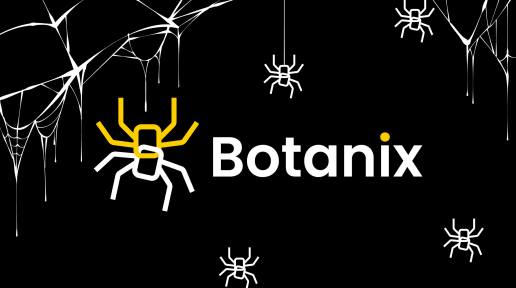The Bitcoin Layer 2 (L2) landscape is witnessing a surge in innovation. A good number of L2 scaling solutions are currently under development to bring more use cases to the Bitcoin blockchain.
Botanix is one name that has emerged as a more prominent Bitcoin L2 solution. In this guide, we delve into Botanix's unique features to explore how the L2 seeks to bridge Ethereum and Bitcoin while settling transactions on the Bitcoin blockchain.
Understanding Botanix
Botanix is unique because it actually is a Turing-complete L2 EVM that is built on Bitcoin. It bridges Ethereum and Bitcoin but settles on the Bitcoin blockchain. Additionally, it makes use of what is called The Spiderchain, which is a set of decentralized multi-sigs that help to secure bitcoin on Botanix.
Botanix employs a Proof-of-Stake consensus mechanism, diverging from Bitcoin's traditional Proof-of-Work. Additionally, Botanix's Turing-complete L2 EVM facilitates smart contract execution. This integration bridges the capabilities of Ethereum with the security of Bitcoin's base layer.
Finally, Botanix operates on the Unspent Transaction Output (UTXO) model, differing from Ethereum's account-based model. This architectural variance impacts transaction processing and security protocols.
How Botanix Works
Botanix offers a seamless solution for transferring Bitcoin between its Layer 1 (L1) and Layer 2 (L2) environments, powered by its innovative EVM-based infrastructure. This process involves the utilization of decentralized multisig wallets, carefully managed by Orchestrator nodes. Through these wallets, users can seamlessly interact with decentralized applications (dApps) connected to the Botanix EVM.
Central to Botanix's architecture is the Spiderchain, a network of decentralized multisig wallets designed to enhance security and resilience. By distributing control across multiple entities, Spiderchain mitigates the risks associated with single points of failure, ensuring the safety of user funds. Each transaction conducted on Botanix is securely processed through these decentralized wallets, guaranteeing the integrity of the platform.
Orchestrator nodes serve as the guardians of these decentralized wallets, overseeing their operations with precision. These nodes are instrumental in ensuring the efficient management of user funds within the Botanix ecosystem. From facilitating transactions to monitoring wallet activity, Orchestrator nodes play a pivotal role in maintaining network integrity, providing users with a smooth and secure experience.
Getting Started with Botanix
In April, the Botanix team announced that over 200,000 wallets had connected to its testnet. While the team has yet to confirm a mainnet launch, users can still interact with the Botanix testnet to and engage with the Spiderchain EVM.
By connecting a wallet, users can receive funds from the Botanix faucet and bridge in and out of the Botanix network. A more comprehensive set of steps is outlined in Botanix's documentation.
Emerging Bitcoin L2s
Of course, Botanix is just one name in the growing Bitcoin L2 ecosystem. It has already become fairly significant, however, thanks to its efforts to introduce new technologies to the Bitcoin network.
As the Bitcoin L2 landscape grows, so does the number of protocols looking to scale Bitcoin through everything from EVM-compatible tools to solutions like ZK-rollups. Needless to say, the innovation seen on Bitcoin over the last year has shed light on the inherent challenges that come with building on Bitcoin while serving as a catalyst for developers intent on bringing more use cases to Bitcoin.

